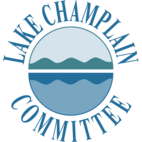Pharmaceuticals in Water
January 2014

Drugs are making their way from our medicine cabinets into our waters, and traces of pharmaceuticals have been found in the environment. Drugs may pass through our bodies unchanged or unused pills may be dumped down the toilet. Wastewater treatments systems were not designed to remove pharmaceuticals, and their ultimate environmental fate is unclear.
The first broad look at the pharmaceuticals in the United States occurred in 2002. Researchers from the U.S. Geological Survey sampled for traces of 95 widespread chemicals from 139 rivers in 30 states, and found evidence of the substances in 80% of the waterways. The average river contained seven different chemicals. Since then the number of potential contaminants has increased, but little else has changed.
In January, EPA scientists published a new report on the presence of pharmaceuticals in wastewater effluent. The study purposefully looked at worst case scenarios, by targeting 50 of the largest wastewater treatment facilities in the country. They looked for 56 different drugs, and found 25 of them in the effluent.
High blood pressure medications were detected most frequently. Of the high blood pressure medications found, hydrochlorothiazide was in every sample while metoprolol and atenolol were found in at least 90% of samples. Valsartan, another high blood pressure medication, had both the highest concentration in any one sample and the highest average concentration.
The drug carbamazepine, used to treat epilepsy and bi-polar disorders, was also found in over 90% of samples. Previous researchers have found carbamazepine particularly resistant to degradation in wastewater facilities.
The EPA study did not consider pharmaceuticals that could reach the environment from the discharge of untreated wastes. Such discharges occur when excessive rain water infiltrates plants and exceeds their capacity for treatment or when mechanical issues prevent proper treatment.
Previous work conducted on Lake Champlain in Burlington considered the relative difference in pharmaceutical concentrations between treated and untreated wastes. For compounds that were not removed during treatment, the load from untreated wastes was a small proportion of the total load. However, for about half the compounds analyzed during this study, the treatment process led to substantial breakdown. For these, discharge of untreated waste during rain events accounted for the bulk of the load to the environment.
In the latest study, EPA researchers downplayed the human health implications of their findings. “Based on data presented, risks of direct toxicity to humans, particularly healthy adults, from (active pharmaceutical ingredients) released into the aquatic environment appear low,” they stated in their conclusion.
It is much more difficult to assess ecological impacts, but what has been studied has been disturbing. Controlled experiments in lakes in Ontario have shown that prolonged exposure to low levels of chemicals that mimic hormones disrupted fathead minnow reproduction. Males became more female-like and egg production in females was altered. This led to “a near extinction of this species from the lake.”
Americans use of pharmaceuticals has increased dramatically. The percentage of people taking at least one prescription drug has gone from 48% in 2007-2008 to 70% today, brought on by an aging population and rapid development of new pharmaceuticals. Every year the Food and Drug Administration (FDA) approves well over 100 new drugs for sale in the United States.
It is increasingly clear that wastewater treatment facilities do not remove pharmaceuticals from waste water. Currently, the only way to limit them in the environment is by minimizing the amount that enters the waste stream. Consumers must be careful with personal use of and disposal of pills and prescriptions to avoid them ending up in waterways. Leftover and outdated pharmaceuticals should be dropped off during drug take back days, deposited in drug drop boxes such as the one provided by Plattsburgh Police Department, or disposed of in a landfill. Ideally, the medications should be disposed of in their original container after blacking out the name of the recipient and rendering the contents unusable either by adding a little water to solids or adding coffee grounds or kitty litter to liquids.
Lake Look is a monthly natural history column produced by the Lake Champlain Committee (LCC). Formed in 1963, LCC is the only bi-state organization solely dedicated to protecting Lake Champlain’s health and accessibility. LCC uses science-based advocacy, education, and collaborative action to protect and restore water quality, safeguard natural habitats, foster stewardship, and ensure recreational access.
Get involved by joining LCC using our website secure form (at www.lakechamplaincommittee.org), or mail your contribution (Lake Champlain Committee, 208 Flynn Avenue - BLDG 3 - STUDIO 3-F, Burlington, VT 05401), or contact us at (802) 658-1414, or lcc@lakechamplaincommittee.org for more information.
